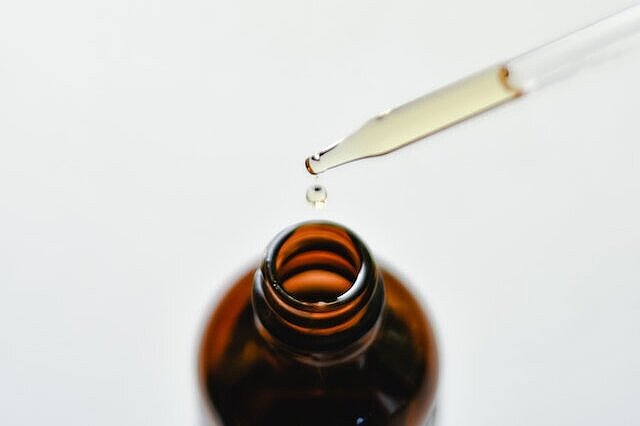Chlorhexidine

What is chlorhexidine and how does it work?
Chlorhexidine is an active ingredient that belongs to the group of biguanides. It has an antibacterial and antifungal effect, i.e. it kills bacteria and fungi or inhibits their growth. Chlorhexidine is particularly effective against gram-positive bacteria, which often cause inflammation of the gums or tartar. It can also help against yeasts, which can lead to skin infections or ear infections.
Chlorhexidine has a depot effect, which means that it remains on the treated area for a long time and develops its effect there. It can also reduce the formation of plaque, a layer of bacteria and saliva residue that builds up on the teeth and can lead to dental problems.
When is chlorhexidine used in dogs?
Chlorhexidine is mainly used in dogs to treat infections in the mouth and throat. It can help with the following problems:
- Tartar
- Lips dermatitis
- inflammation of the gums
- conjunctivitis
Chlorhexidine can also be used to treat other infections, for example
- Skin infections
- ear infections
- wounds
How is chlorhexidine used in dogs?
Chlorhexidine is available in various forms, for example as:
- Gel
- spray
- solution
- shampoo
The gel is particularly suitable for dogs as it adheres well to the mouth and is easy to apply. The gel usually contains 1% or 2% chlorhexidine and is applied to the affected area with a finger or a cotton swab. The dosage depends on the weight of the dog and should be determined by the vet. A common dosage is 0.5 mg chlorhexidine per kilogram of body weight per day.
The gel should be applied once a day, preferably after eating. Care should be taken to ensure that the dog does not eat or drink again immediately after application so as not to impair the effect. The gel should also not be wiped off or rinsed out.
The duration of application depends on the severity of the infection and should also be determined by the vet. As a rule, one to two weeks is sufficient to achieve an improvement.
What side effects can chlorhexidine have in dogs?
Chlorhexidine is considered to be well tolerated and has few side effects in dogs. Possible side effects include:
- Brown discoloration of the tooth necks
- Increased salivation
- Irritation of the mucous membranes
- Allergic reactions
The brown coloration of the tooth necks is usually only a cosmetic problem and disappears after the gel is discontinued. Increased salivation is a normal reaction to the bitter taste of the gel and poses no danger. Irritation of the mucous membranes can be caused by too high a dosage or too long an application and should be avoided by adjusting the therapy. Allergic reactions are very rare, but can lead to skin rash, itching or shortness of breath. In this case, the gel should be discontinued immediately and a veterinarian consulted.
Chlorhexidine is an effective agent for combating bacteria and fungi in dogs. It is mainly used in the mouth and throat area, but can also help with other infections. The gel is easy to use and has few side effects.
If you notice any signs of hypersensitivity or poisoning in your dog, you should see your vet immediately. We are not a substitute for a vet, but we try to be as accurate as possible. Every dog reacts differently and we recommend you get a second opinion or consult your vet if in doubt.
Stay healthy and take good care of your four-legged friend!😊
Similar to Chlorhexidine
CPC is a quaternary ammonium compound that belongs to the cationic surfactants. This means that it has a positive charge and attaches itself to negatively charged surfaces. CPC has an antiseptic...
Benzalkonium chloride is not only an effective antiseptic, but also a powerful cytotoxin. If it gets onto the skin or mucous membranes of dogs, it can damage the tissue and cause inflammation. This...
Triclosan is a chemical compound that is used in a variety of consumer products due to its powerful antibacterial and fungicidal effects. From toothpaste and soaps to textiles and kitchen utensils,...
Ethanol can enter the dog's body in various ways. The most common route is oral ingestion, e.g. when the dog consumes alcohol-containing drinks, food or medication. Ethanol can also enter the dog's...



